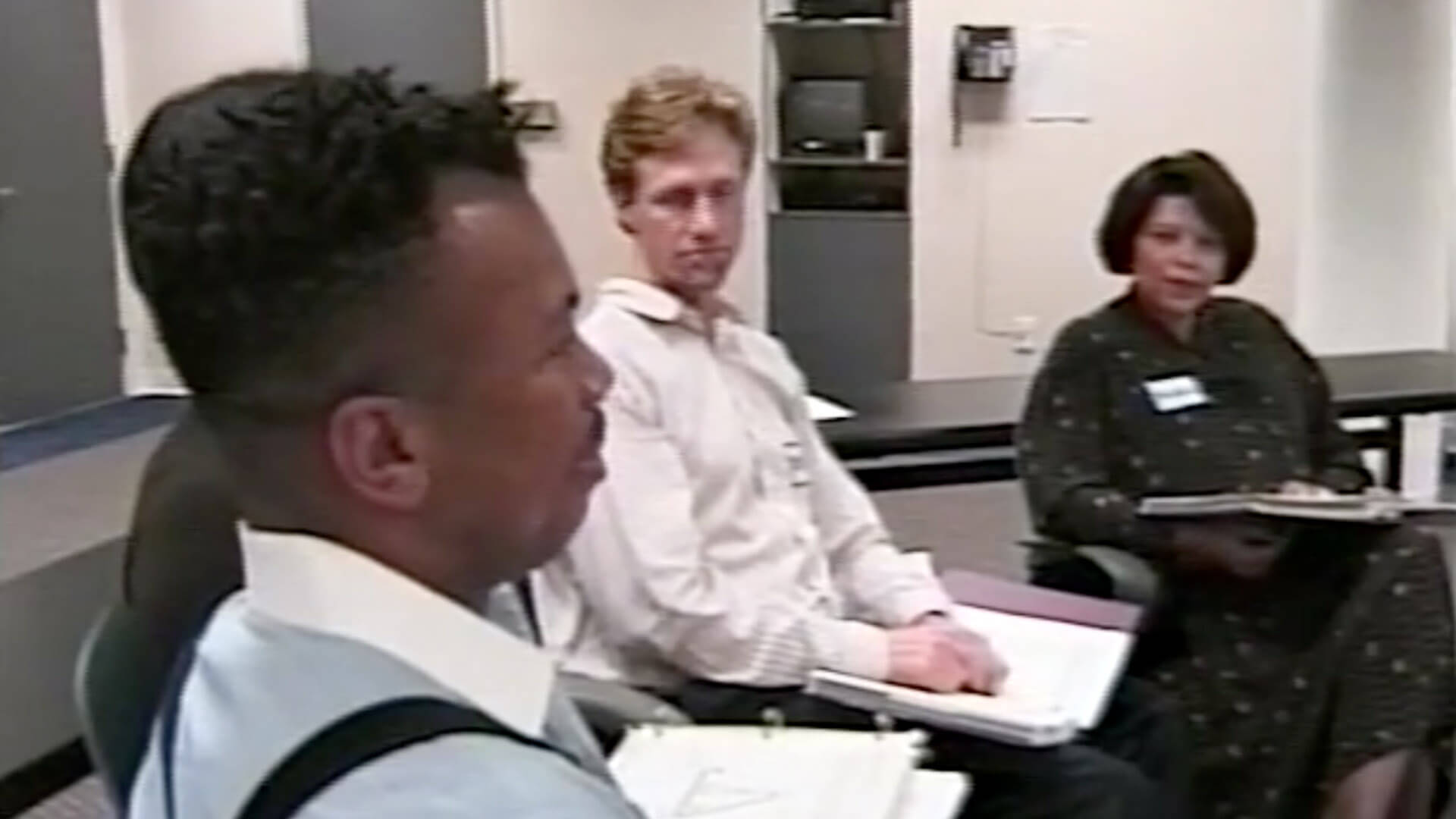"No matter what business problem or issue we're handed, we can navigate our way through it. That's the beauty of IA's collaborative models and tools. They work for almost any challenge or opportunity. And the IA consultants practice what they teach."
- Vice President, Global Talent Management, TJX

Interaction Associates (IA) introduced the concept and practice of group facilitation to the business world in the early 1970's. During the revolution of Total Quality Management (TQM) in the 1980's, IA developed Facilitative Leadership™ to help senior leaders empower teams to think beyond the box, innovate, and achieve mission-critical goals.
For over 55 years, IA has provided leaders and teams with practical, simple, and effective programs, tools, and techniques for working better across functions, viewpoints, and geographies.
More than one million people have learned The Interaction Method™, a proven approach that builds understanding and drives action.
Today, we're still focused on what matters most: helping people solve problems, make decisions, and achieve results--together.
Our workshops are built around hands-on practice. People learn best through action, not just listening. That’s why our sessions combine real learning moments with practical opportunities to apply what they've learned.
Our workshop leaders are known for the depth of their experience. They’re committed to delivering high-impact sessions, ensuring every attendee gets the most out of their time.
The most common feedback we receive is that the skills taught in our workshops are immediately useful. After an IA program, you can put what you’ve learned into practice right away.
Every participant brings their unique experiences to the table, making peer-to-peer learning a core part of every workshop. This is a key part of how we design our training sessions.
55+
Years of Expertise
5k+
Companies Served
1M+
People Trained
It’s a collaborative process for working together. More specifically, The Interaction Method is a facilitated approach for building understanding and agreement so that people can take informed, concerted action on what that matter most to them.

In 1969, David Straus founded Interaction Associates. An architect by training, David observed that problem-solving meetings were quite ineffective – mostly because people didn’t distinguish between process and content. David suggested that there are four key meeting functions: participation, decision making, process management, and information. Why not assign responsibility for each function to a person – participant, leader, facilitator, and recorder? Collaborating with others, David also popularized the use of a Group Memory – posting butcher paper on a wall and writing down everyone’s ideas with markers.

By 1990, we had introduced the concept of the group facilitator into hundreds of companies. (The word facilitator even leap-frogged the word trainer at group learning events) We asked our clients – what does The Interaction Method mean to you? They cited dozens of models, skills, techniques, strategies, and illustrative stories. We organized them into four categories: Shared Responsibility, Collaborative Attitude, Strategic Thinking, and Facilitative Behaviors.

Shared responsibility means that everyone involved in the group process performs a useful function – from the practical task of documenting ideas and agreements to generating group energy.

The more people who come to a meeting ready to work with others — and to aim for a win-win outcome — the greater the likelihood that the group will achieve its goals.

People like goals, order, and to see a path to completion. Clear, common sense frameworks and processes help us organize our thoughts and opinions. Collaborative tools help us transform data into information, understand our choices, and make decisions together.

These are the practical tools and positive actions that people use and demonstrate to forward the progress of the group – from active listening, to advocating for our ideas, to creating consensus and reconciling differences.

Today, The Interaction Method is at the core of IA training and is the reason for every workshop's success. Over one million people around the world have been trained in The Interaction Method and we look forward to millions more experiencing it.


Our Mission
We help people work better together to achieve the things that matter most to them. We do that by demonstrating the power and transferring the skills of conscious collaboration. Conscious collaboration is a mindful approach for working with others to produce mutually beneficial outcomes.
What We Value
Client Service
To understand client needs and aim to exceed their expectations.
Professional Excellence
To demonstrate competence and aim to continuously improve.
Principled Action
To speak truth to power and aim to do the right thing.
Shared Responsibility
To help the team succeed and aim to add value at all times.
Stakeholder Voice
To include people in decisions that affect them and aim for maximum appropriate involvement.
Social Responsibility
To be an active citizen and aim to stand for inclusion and fairness.
Human Dignity
To respect others in daily interactions and aim to assume the best about their intentions.
With disco at its peak and innovative technologies on the horizon, IA began its journey in 1969, introducing the world to a revolutionary approach to meetings with The Interaction Method™, a cornerstone of everything we do at Interaction Associates.
In 1976, founders Michael Doyle and David Straus authored 'How to Make Meetings Work,' a pivotal guide that transformed the dynamics of meetings.
IA also raised the bar by incorporating the roles of facilitators and scribes into the business environment, initially with Quality Teams at Ford.

With the electric pulse of the '80s and the advent of the personal computer revolutionizing the workplace, IA introduced Facilitative Leadership®, blending inclusive management with expert facilitation to amplify leadership impact.
We also presented clear, practical strategies with Facilitating Change™ and The Principles of Collaboration, reshaping how leaders and teams connect and succeed.
Notably, IA's influence reached DuPont, where we played a key role in enhancing teamwork and driving innovation through Total Quality Management.

Teams in Action™ & Team Sponsorship™, integrating shared responsibility and personal accountability with team collaboration.
Managing with Impact™ & the book How to Make Collaboration Work.
Advanced Facilitation Skills
e.g., GE Black Belts.

Entering the new millennium, with the dot-com boom and a global focus expanding, IA embraced the challenge with Collaborative Design Thinking and a renewed emphasis on Global Teams.
Our Collaborate to Innovate program combined creative problem-solving with team collaboration, igniting new pathways to innovation.
The introduction of Blended Learning answered the call for adaptive and diverse educational approaches, exemplified by our work with Roche Research Teams.

The 2010s, marked by social media's rise and mobile technology becoming ubiquitous, saw IA address the nuances of a dispersed workforce.
We launched virtual instructor-led training to master the art of leading from afar, adapting The Interaction Method™ for an increasingly online world.
Our expertise in encouraging virtual teamwork shone through in partnerships with global players like GE, proving that team spirit knows no borders.

As the decade began with the unprecedented challenges of COVID-19, the nature of work underwent a seismic shift. Remote collaboration became the lifeline for businesses, and IA was at the forefront, helping navigate the new normal.
Our Action Accelerators emerged as a response to urgent learning needs, providing quick, effective online education in a time of widespread uncertainty.
IA continues to guide leaders and teams through these transformative times, ensuring that, even when physically apart, we're collaborating closer than ever.


Diversity and Inclusion Declaration
Our mission at IA is to help people work better together to achieve the things that matter most to them. In our work, we facilitate authentic and productive human connections. We’ve witnessed how honest conversations, however difficult, can foster more equitable policies and inclusive behaviors in the workplace.
IA aims to provide equal opportunities to, and prevent discrimination of, any aspiring L&D and administrative professional regardless of gender identity or expression, sexual orientation, religion, ethnicity, age, neurodiversity, disability status, citizenship, or any other personal situation or aspect which makes them unique.
We strive to build a company culture where inclusion and engagement is our way of operating day-to-day, not an initiative.
As a company, we have a long way to go to reflect the wonderful diversity of our American community. We invite our employees, partners and clients to support us in our efforts through, feedback, audit and encouragement.
As a U.S. company with global reach, we commit to using our skills and position in the learning and development industry to amplify the practice of conscious collaboration as a tool for equity and justice.
Together, we can build more inclusive, just, and equitable workplaces.
Please fill out this form and someone will reach out to you.